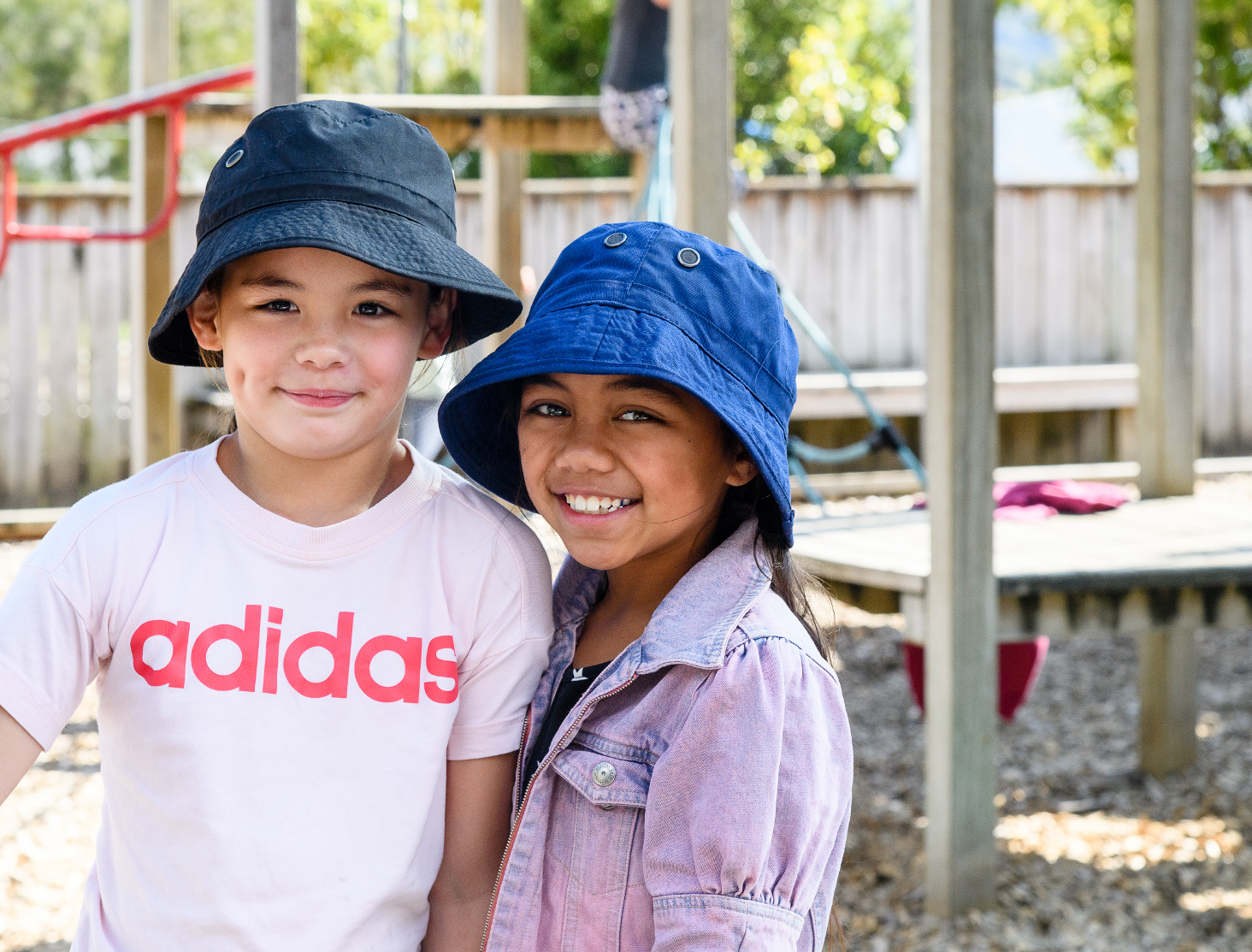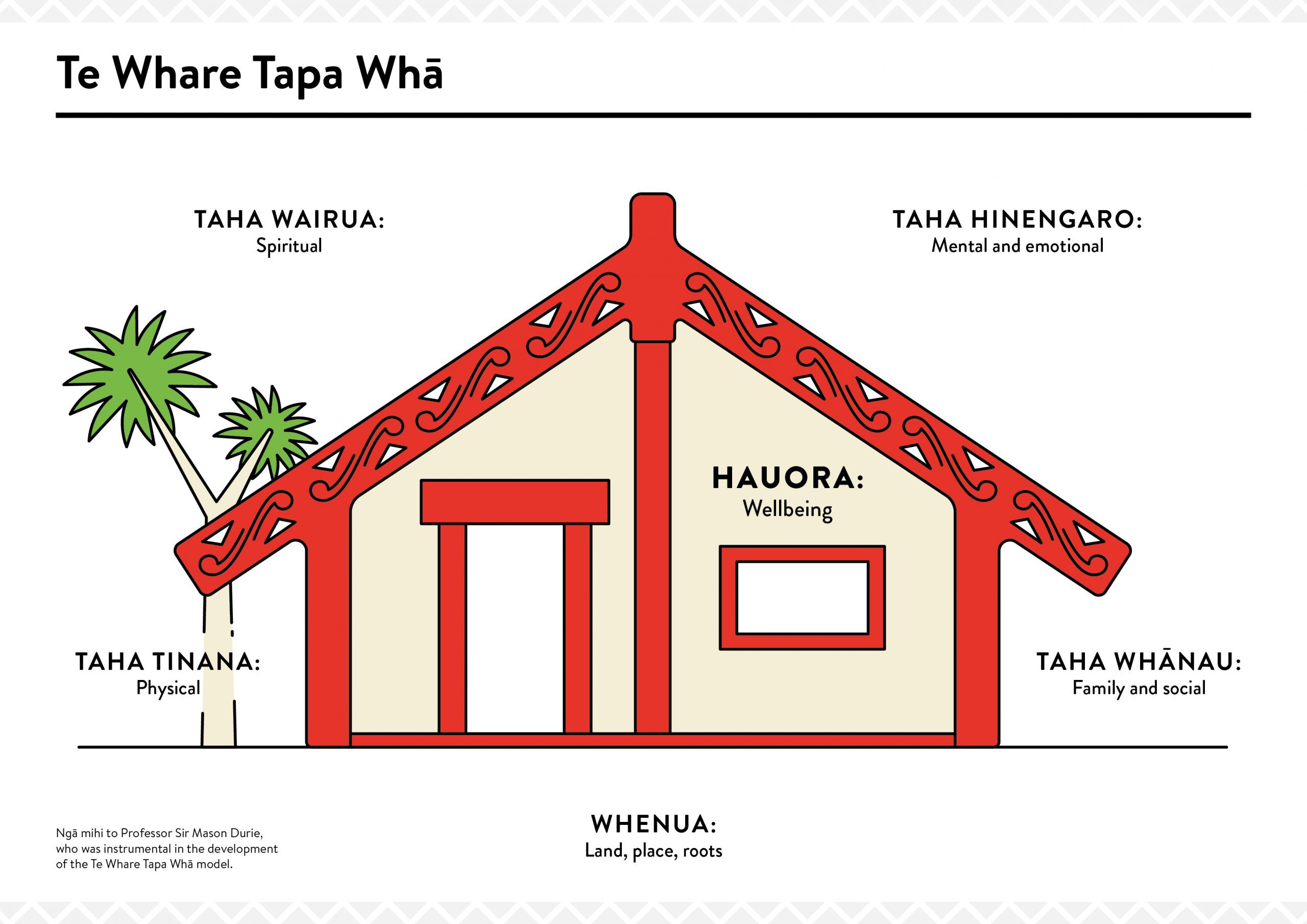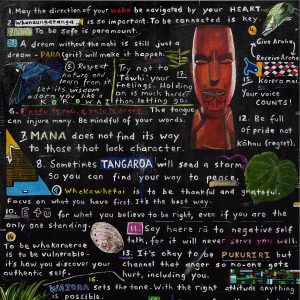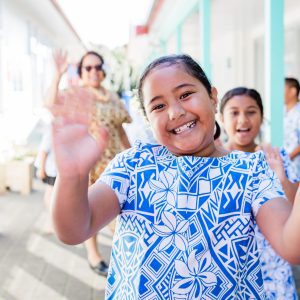“Kia piki ake te mātau, te mōhio me te māramatanga, whāia te iti kahurangi!” By taking small upward steps, knowledge and enlightenment will be enhanced, and excellence will be achieved![i]
Te Whare Tapa Whā is a well-known holistic Māori model of wellbeing used widely in schools and kura throughout Aotearoa. The model uses the symbol of the wharenui to illustrate the four dimensions of Māori wellbeing: taha tinana (physical health), taha wairua (spiritual health), taha whānau (family health) and taha hinengaro (mental health). The model reminds us to equally care for the different aspects of our life to support our wellbeing. It was developed in 1982 by Sir Mason Durie and even though the model is nearly forty years old, it continues to support education professionals to develop holistic approaches to hauora and school culture.
What does this mean in practice? Ako visited two education organisations – an Upper Hutt primary school and an Ōtaki kura kaupapa Māori – who have successfully integrated the Whare Tapa Whā model into the heart and soul of how their schools are run. For formerly Māoribank School in Upper Hutt, the change of name to Te Kura o Hau Karetu in February this year is an indication of the school’s commitment to Te Tiriti o Waitangi, says Principal/Kaihautū Karen Wellington, and to new ways of supporting tamariki hauora. “From my perspective, it’s us contributing to making this right for Māori,” she says. Fifty-nine percent of tamariki at the school are Māori, 30 percent New Zealand European and ten percent Pasifika. The decision to change the name was made on advice from Kura Moeahu of Te Atiawa – Hau Karetu was the original name for the area.
Though the school is predominantly English-speaking, kaupapa Māori, te reo me ōna tikanga, are significant in the culture of the school. “Kaupapa Māori is a big part of how we roll,” says the school’s Deputy Principal and sports coordinator Shea Coxson (Ngāti Kikopiri, Ngāti Raukawa). “It’s an important part of our fabric as a school, it’s our lens that we look through.”
Each day begins with a whole-school waiata karakia, and a talk about the “kaupapa mō te wiki”, based on the school’s values. “It’s a really important part of our day,” says Wellington. The school’s four key values are: whakaute (respect), akohia (learning), kotahitanga (togetherness) and atawhai (kindness). “Our whānau have created those values, they’ve come from them,” says Wellington. And when teachers role model and express those values at school with their tamariki, whānau are also supported in their implementation of the values at home.
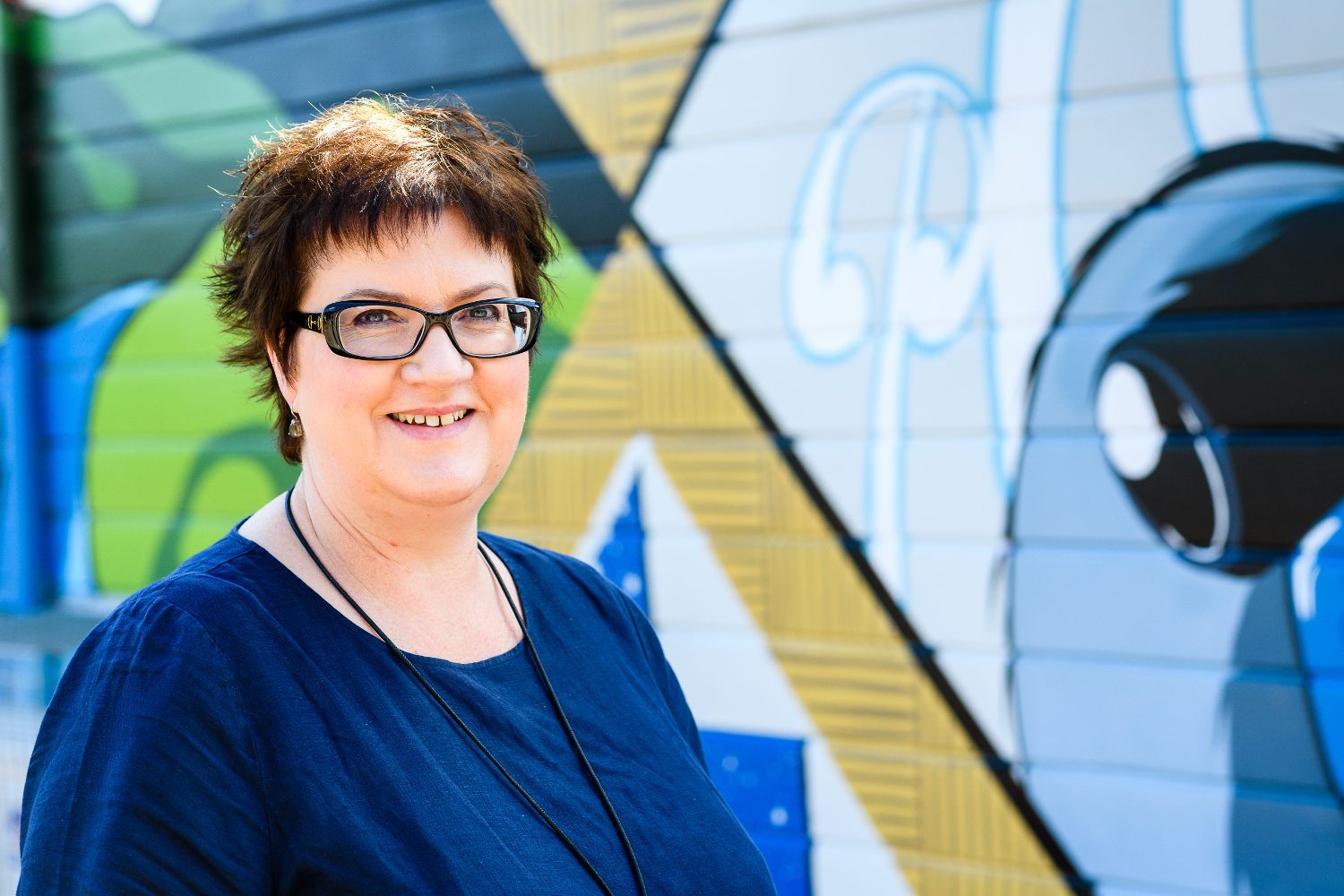
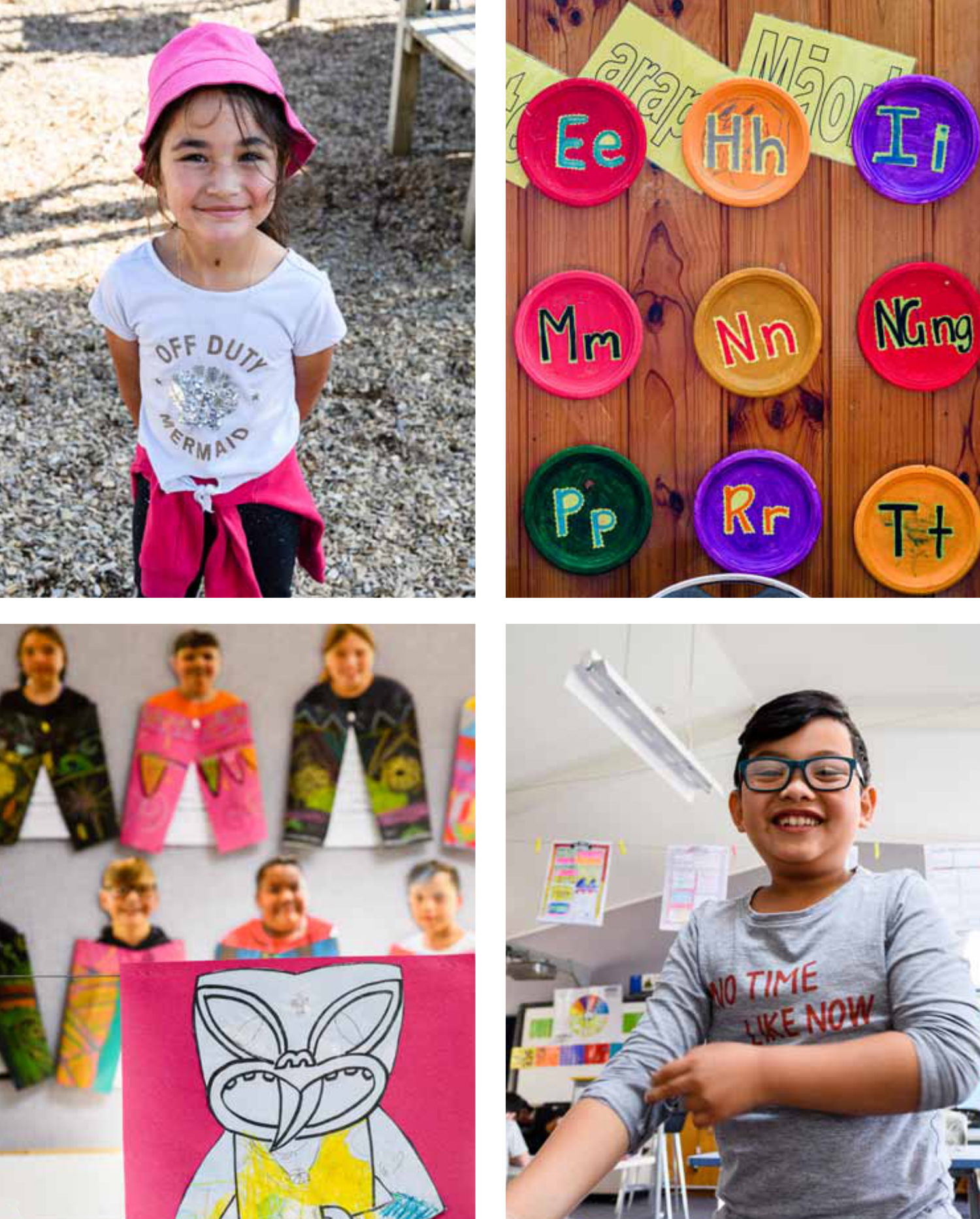
Five years ago there were many children with serious behavioural problems at the school, but now such problems are rare and hauora across the school has risen. This is due to a series of values-based programmes being implemented over several years, including the Whare Tapa Whā model which was piloted in the Health and Physical Education curriculum area, and then integrated throughout the school.
In 2017, a Play.sport pilot project to support teacher confidence and competency in teaching Health and Physical Education saw Shea Coxson work with Play.sport coordinator Jarod Summers, and led to a stronger emphasis on Te Whare Tapa Whā throughout the school. “It was about moving away from games and fitness, to actually delivering a health and wellbeing based approach. They supported Te Whare Tapa Whā, which we were familiar with, and they helped us use that model and incorporate it into how we deliver health and PE,” says Wellington. “This has brought it to life for us. It’s like teaching a language. You have to specifically teach Te Whare Tapa Whā and report on it, and set goals against it as well,” she says.
Coxson explains further: “We designed a programme – if the context was basketball, we used Te Whare Tapa Whā to deliver basketball. Each day was something different. If it was whānau, what skills do you need to be successful in basketball, related to taha whānau? For example, sharing the ball, teamwork. What skills do you need to be successful in basketball involving hinengaro? You need strategy or being honest, mental skills. Tinana is self-explanatory. Wairua, we teach values to be successful such as fair play, respect, humility.”
“You have to specifically teach Te Whare Tapa Whā and report on it
and set goals against it as well”
“So we married the context of sport, a practical concept, with Te Whare Tapa Whā. It moves it away from just doing games and fitness to improving the wellbeing, the hauora of the students. It has to be taught specifically,” he says. Getting to know the kids enabled him to tailor the programme to their needs, because some groups are highly competitive and need training on fairness and honesty; other groups lack confidence in physical skills and need support to build that up.
The physical activity strand (called “Movement concepts and motor skills”) is only a quarter of the Health and Physical Education curriculum area, and not the only place where the model can be used. “It doesn’t have to be about sport – it’s about understanding who you are as a person, understanding your wellbeing and needs,” says Coxson. “Te Whare Tapa Whā is the underlying concept of the health curriculum. If all you did was work on tinana, that’s not hauora.”

Since then, Te Whare Tapa Whā has spread across different aspects of school. “We used Te Whare Tapa Whā for goal setting, and the parents have been very positive about that. It goes into our reporting – paper reports twice a year, discussing those goals, that’s a big part of our reporting,” says Wellington. Wairua goals might be learning karakia, leadership goals (rangatiratanga), or giving back to the school in other ways. For example, one girl always picks up rubbish, and says, “Mrs Wellington, I’m looking after the environment!”
Other initiatives support the model’s dimensions of wairua, whānau and hinegaro. The school has a strong commitment to use of te reo in assembly and in class. “We try to normalise te reo, just make it part of everyday life,” says Coxson. The school accommodates a Resource Teacher of Māori, who works in nearby schools, and also has a strong association with a Kōhanga Reo next door. “We’re all pretty much on the waka,” says Wellington. Kaumatua associated with the Te Kura o Hau Karetu are Jim Kara and Hine Poa of nearby Ōrongomai Marae. “We’re so lucky to have them,” says Wellington.
The school also uses a “restorative” process for dealing with problem behaviour. “I think of it as kind of like ‘utu’, redressing the balance. We talk about it with both children together. It’s not about punishing that student, but saying how things have happened, how can we restore it, and so lift up the mana of that person again,” says Coxson.
Staff training on dealing with children who have suffered trauma has also helped staff gain understanding of their behaviour. “The trauma has had some real impact on the development of their brain. It’s not the kid’s fault. Having that empathy and understanding from an adult’s perspective helps us to be calmer,” says Wellington.
In 2019, Te Kura o Hau Karetu was presented with the Physical Education New Zealand “Outstanding Physical Education Award”. This was the first time the award had been given to a primary school, and Wellington and Coxson were delighted. “It was huge!” says Wellington. “Although he’s very humble, it was really Shea and Jarod who developed this, not just Play.sport.”
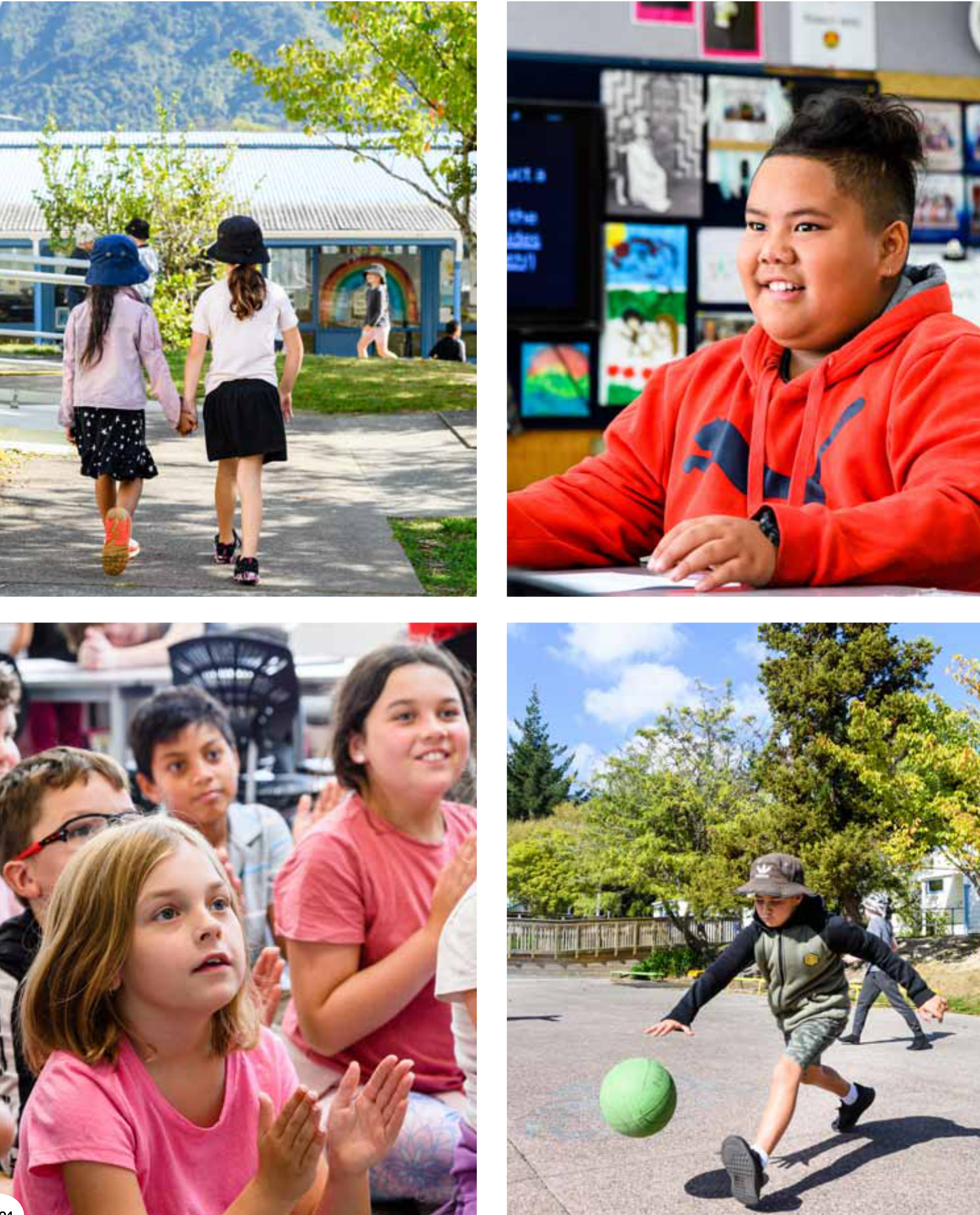
***
Te Kura Kaupapa Māori o Te Rito in Ōtaki integrates Te Whare Tapa Whā into everyday assessment by using a system of reward cards of four distinct colours to represent each of the four aspects of Te Whare Tapa Whā – red for tinana, blue for hinengaro, green for whānau and purple for wairua.
By pouako consistently noticing and acknowledging productive behaviour of tamariki, the poutama principle applies – “Kia piki ake te mātau, te mōhio me te māramatanga, whāia te iti kahurangi!” By taking small upward steps, knowledge and enlightenment will be enhanced, and excellence will be achieved! The idea is that tamariki are praised for productive behaviour immediately, praise at kura is backed up at home, and that the system is simple and well-understood at both kura and at home.
The Whare Tapa Whā system specific to Te Kura Kaupapa Māori o Te Rito – and created by whānau of that kura when it began in the 1990s – is Te Whare Tauawhiawhi. When it was first developed, a system of individual kono for each child with coloured stones (again four colours, representing the four aspects), was used. Stones given to acknowledge productive behaviour were put in the kono (woven bowls) to take home and discuss.

Current Tumuaki of Te Kura Kaupapa Māori o Te Rito, Heni Wirihana was one of the parents who developed the system when the school began. “When my children were young, I’d be at home and they came back with their kono, it was beautiful. I’d go wow, ‘tino pai ō mahi! Tino kaha tō taha whānau, maha ngā kohatu, tino pai. He aha ō mahi?’ So it was a good form of reporting and we knew what they were good at, so they got acknowledged at kura and they’d get that same acknowledgement at home,” she says.
But over time, as the kura grew, and whānau became increasingly busy, the task of making kono for each child became too labour-intensive. “To bring it to 2021, we now have those cards, ngā tae kaari,” says Wirihana. Pouako or teachers will write the child’s name on the card, and the reason they are being given. The cards are put in named pockets, and then on Mondays, they are put in four kete and celebrated at nearby Rangiātea Church.
“At the beginning of each week, we take those kete and have karakia at Rangiātea. We read out the names from all the kete again. The kids remember that they’ve been acknowledged for work previously. Then we’ll pull out a card randomly, and that child has won a voucher. They’ll get half an hour free time on the iPad, or a break from ohu mahi, for example,” she says.
“Ohu mahi” is clean-up work, in the classroom, shared buildings or grounds, which children usually have to do at the end of each day. “Most kids love that – they don’t have to come into the kitchen or sweep the steps,” says Wirihana.
“It was a good form of reporting and we knew what they were good at, so they got acknowledged at kura and … at home”
Te Kura Kaupapa Māori o Te Rito, with a roll of only 87, is able to keep class sizes small (under 25 per classroom) and several of the staff are former students (raukura). There is also an on-site Kōhanga Reo (Te Kakano o te Kura o Te Rito), and a whare kura (secondary school). So the tuakana/teina principle is strong. And the system of rewarding productive behaviour in each of the four aspects – tinana, hinengaro, whanau and wairua – allows staff to note if a child is not achieving recognition in any of the four areas, or not in any area, and then to offer support.
“It’s my job to say to pouako, this child hasn’t [been recognized], is there a problem? What’s going on? It starts showing up a number of things, it could be there’s not a lot of attendance,” says Wirihana. Being at the heart of Ngāti Raukawa tribal rohe, whānau are influenced by the iwi philosophy of Te Whakatipuranga Rua Mano (the revival of te reo me ōna tikanga, hapū and iwi engagement), as well as the need to develop skills for the modern world. The four card system is a way to support tamariki hauora from a young age.
While this is a good example of a kura kaupapa practicing Te Whare Tapa Whā (Te Whare Tauawhiawhi), we should not forget that kura kaupapa are generally suffering from a lack of resourcing and committed support from Government. “For the vision to hit the ground, for kura kaupapa to keep developing, it’s not well enough supported. We’re always up against it,” says Wirihana.
Te Runanganui o Ngā Kura Kaupapa Māori spokesman Rawiri Wright confirmed that long waiting lists still exist, supply is not meeting demand. Despite the proven success of kura kaupapa[ii], the Government is not providing the funding needed for kura kaupapa to thrive and grow. “It’s all in our Waitangi Tribunal claim.” The kaupapa Māori education claim is eighth on the Tribunal’s list and so will be heard in later years.[iii]
***
Professor Meihana Durie, Deputy Vice Chancellor Māori and Head of School, Te Pūtahi-a-Toi (School of Māori Knowledge) at Massey University, says that the Te Whare Tapa Whā model developed by his father, Sir Mason Durie (ONZ KNZM), has been used widely in teacher trainee delivery, and also in the health curriculum across mainstream schools and kura since the 1990s.
While this is positive, there is a lack of research on its application, and he believes that a more mātauranga-centred approach to teaching the concept would add greater depth of knowledge for each of the four dimensions, and an understanding that all the dimensions are interwoven within the whare itself.
Some solutions Meihana offers to strengthen its application are to increase the number of Māori teachers in schools, particularly in senior positions (such as principals), and for each school to have a policy of Māori and non-Māori co-chairs of its Board of Trustees. “Then you have real decision-making power to change the system, change the culture of schools,” says Meihana. Other solutions Meihana supports are:
- More funding for kura kaupapa Māori (as above), to build our puna reo, our community use of te reo Māori, and our pool of teachers expert in te ao Māori;
- More funding and support of kaiārahi i te reo – a kaiārahi i te reo claim, initiated by NZEI Te Riu Roa, is now underway;
- More uptake of decolonisation training such as led by Poutama Pounamu (82 primary schools currently engaged), and Te Pumaomao, Nation-Building Seminars;
- More scholarships for rangatahi with Māori expertise to gain tertiary qualifications and enter teacher training;
- A greater emphasis on taha wairua in schools, as advocated by Dr Rongoitekai Ngata, kaiārahi i te reo at two Raumati primary schools (Dr Ngata has attended several traditional spiritual wānanga since 2006 – see his 2014 doctoral thesis on matakite/intuition and mental health)[iv];
- Inclusion of Māori perspectives in the history curriculum, as announced (September 2019) by the Prime Minister Jacinda Ardern and Education Minister Chris Hipkins[v];
- Further uptake of Te Ahu o te Reo Māori, the Ministry of Education programme to build teacher understanding of te reo Māori;
- And stronger community engagement, such as a better system for providing koha for kāumatua and other local hapū and iwi experts; and more whānau reinforcement of te reo Māori, tikanga and decolonisation.
While there are a range of Māori wellbeing models, and some include aspects such as whenua (land), te ao turoa (the natural environment) and whatumanawa (emotions),[vi] Te Whare Tapa Whā is a model which is simple, well-understood, and a good foundation to build on. But don’t be shy of seeking new mātauranga, particularly from local mana whenua hapū and iwi! To conclude with a quote from Dr Rangimarie Turuki Pere[vii]: “The university of ancient Hawaiki is the universe, and as such, education has no boundaries.”
The importance of te taha wairua
The importance of te taha wairua for our wellbeing as Māori is referred to in many scholarly works – Pere 1984[1]: Durie 1985a[2]; Moeke-Maxwell 2001[3]; and also my own thesis about finding identity strength as Māori – Te Putahitanga o Ngā Tai e Rua, The Meeting of Two Tides, Journeys of Mixed Heritage Māori/Pakeha Towards Identity Strength.[4]
Dr Rongoitekai Ngata, kaiārahi i te reo at two primary schools in Raumati, Paraparaumu, with a doctorate from Massey University about matakite/intuition, and extensive wānanga knowledge[5], argues that te taha wairua is the most important aspect of Te Whare Tapa Whā, and needs much more emphasis and in-depth education in most schools.
“The wairua side is fundamental. When one experiences the greatness of the soul, the expansion of the soul, you realize that taha tinana, taha hinengaro, taha whānau, those aspects are like the tip of your little fingernail, compared to the taha wairua.”
By anchoring children in a spiritual identity, they get a sense of themselves beyond the physical, beyond the world of ideas and information, and beyond their relationships with whānau and others, Rongo says. A practical wairua education should ideally have outcomes such as less anxiety and fear of death, a deeper sense of resilience, a stronger sense of connection to te taiao (the natural world), and a stronger sense of connection to tūpuna, he says.
“The materialist Western society is spiritless, so we have a crisis of meaning, a crisis of wairua. The mental health system is asking, what are we missing? They can’t see the huge vacuum which they’ve gotten used to not seeing, which is a vacuum of wairua education,” he says.
One of the ways he enables tamariki to anchor themselves in their spiritual identity is through teaching a tohi karakia, which is a blessing or acknowledgement of themselves as “he pou hihiko, he pou rarama”, gleaming like the rays of the sun. He asks them to do a drawing of themselves using the symbols in the karakia, and then finally the tohi karakia is used at the time of departure from the school.
He tells the children: “You are a pillar, he pou hihiko, dynamic electric lightning energy. I ask the kids, what pou hihiko ever woke up in the morning and was afraid of or worried about the pimple on their nose? No. The sun isn’t worried about how it’s going to be perceived by people. It just comes up and radiates its power.”
The karakia ends with “haramai te mauri, haumi e, hui e, taiki e!” Mauri ora was referred to in 2015 by Sir Mason Durie in relation to children learning at school. When the mauri (spirit or life force) of the child is alight, the child is flourishing at school – with an alert and inquiring mind, a healthy body and mutually beneficial relationships.[6] This is the goal and the importance of taha wairua education, supported by the other three sides of wellbeing.
REFERENCES
Te Whare Tapa Whā – the four sides of Wellbeing
[i] Te Whare Tauawhiawhi (2016), Te Kura Kaupapa o Te Rito, Ōtaki (a system of providing positive reinforcement for productive behaviour).
[ii] Heeni Collins. “Let the uniqueness of the child guide us in our mahi,” Ako: Summer 2019. https://akojournal.org.nz/2019/01/28/let-the-uniqueness-of-the-child-guide-us-in-our-mahi
[iii] https://waitangitribunal.govt.nz/assets/Documents/Publications/Kaupapa-inquiry-programme-App-B-updated-Jan-2021.pdf
[iv] Dr Ronald Ngata. Understanding Matakite. PhD Thesis (Massey University, 2014). https://mro.massey.ac.nz/handle/10179/8299
[v] https://www.beehive.govt.nz/release/nz-history-be-taught-all-schools
[vi] M. H. Durie,“Te Hoe Nuku Roa framework: A Māori identity measure.” The Journal of the Polynesian Society 104, No. 4 (1995): 461–470.
[vii] Dr Rangimarie Pere. Te Wheke: A Celebration of Infinite Wisdom. (New Zealand: Ao Ako Global Learning, 1997).
The importance of taha wairua
[1] Pere, R. (1984). Te Oranga mo te Whānau. In Hui Whakaoranga Māori Health Planning Workshop. Wellington: Department of Health.
[2] Durie, M. H. (1985a). A Māori Perspective of health. Soc.Sc.Med, 20: 483-6.
[3] Moeke-Maxwell, T. (2001). Māori Women’s Bodies Speak a Hybrid Voice. In Te Taarere aa Tawhaki, Journal of the Waikato University College Vol 1.
[4] Masters in Philosophy (Māori Studies), Massey University, 2003 (Available on request, henimc001@gmail.com).
[5] Rongo has trained in various traditional spiritual wānanga since 2006. His background is outlined in his doctoral thesis, which can be accessed at https://mro.massey.ac.nz/handle/10179/8299.
[6] Mason Durie, Healing Our Spirit Worldwide, the 7th gathering, 15-19 Nov, 2015. Kirikiriroa, Hamilton.
